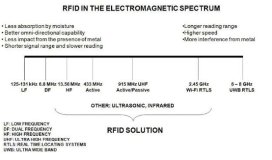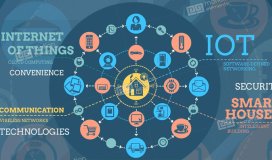International fleet-management application provider DRVR is providing access to telematics-based information about vehicles, as well as their location and status, across thousands of miles, via its global Internet of Things (IoT) connectivity partner, Tata Communications. The system that Tata Communications provides—Tata's MOVE-IOT Connect SIM technology—enables DRVR to use seamless mobile connectivity for its customers when crossing borders, or as farm vehicles move through remote agricultural areas.
DRVR (pronounced "driver") is a solution provider that serves companies managing fleets of vehicles, as well as vehicle manufacturers themselves. It was launched in Bangkok, Thailand, in 2015. The firm's technology includes sensors and telematics boxes installed within a vehicle, a wireless connection to the internet, an app and a Web portal with which users can access information from the company's DRVR Engine software, involving everything from a truck driver's behavior to fuel management.
![]()
The system aims to prevent fresh food spoilage due to temperature fluctuation, the company explains. For instance, a temperature sensor built into a truck's container can capture conditions inside that container during transit. It can also help users to better manage their dispatching of vehicles and cut fuel costs based, for instance, on information about traffic. Moreover, if a vehicle's door were left open for a period of time, or at a certain location, outside acceptable perimeters, the software could forward a reminder to the vehicle's driver, provided that he or she had the DRVR app downloaded onto his or her Android or iOS device or other telematics machine.
At present, the company is targeting businesses in Asia that are growing exponentially and manage a fleet of vehicles that cross borders or simply operate across areas served by multiple wireless network operators. Without a system like DRVR's, says David Henderson, the firm's co-founder and CEO, they may lack easy access to fleet data as vehicles move across countries or the Asian continent.
To illustrate how much commercial traffic has increased in parts of Asia, Henderson cites some border-crossing statistics. For example, a year ago, trucks carrying legitimate goods rarely crossed the border between Thailand and Myanmar. Now, there are approximately 150 such crossings daily. "Cross-border mobility is going to be quite a bit more prevalent than it has been in the past," says Anthony Bartolo, Tata Communications' chief product officer of collaboration, mobility and IoT.
However, there are hundreds of local cellular service providers in the areas in which DRVR's customers travel, the firm reports, and the only way to access data across all of those regions is to have a contract with every telecom company in each region. "I don't want to spend time negotiating with telecom execs across Asia," Henderson states.
![]()
That's where the MOVE-IOT Connect SIM technology steps in for DRVR, Bartolo says. The sensors transmit data is collected in real time, using the best available local cellular network. The DRVR application then processes and analyzes this data, turning it into actionable intelligence, such as providing fleet-performance metrics on a user's telematics device—a phone or laptop computer, for instance.
DRVR offers its fleet-management solutions to customers throughout Thailand, Hong Kong, Indonesia, the Philippines and Myanmar, while there are pilots currently under way in Sri Lanka and Australia as well. Several thousand vehicles are included in its network so far, while the company expects that number to grow to tens of thousands during the coming few years.
Several vehicle manufacturers, such as New Holland Tractors and Mercedes in Myanmar, are installing the DRVR devices on some of their new vehicles, as an added feature for customers wishing to track their fleet. Logistics firms using the technology, Henderson says, include such carriers as DHL in Myanmar.
When a vehicle utilizes the solution, sensors transmit data using the MOVE-IOT Connect SIM technology, which connects services using the best available local cellular network. DRVR then collects and analyzes data. "We run a number of algorithms," Henderson explains, "and turn it into actionable data," which can be forwarded to management. For example, the information could indicate how fast a particular vehicle is moving, when it may have left its expected transit route, or when it may be delayed. The system can also detect a problem, such as a failure of the technology—for instance, if someone placed a piece of foil over the device to prevent transmission.



